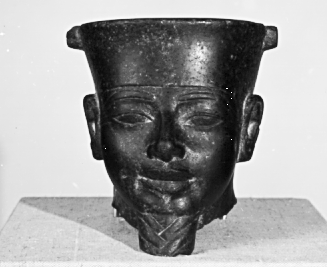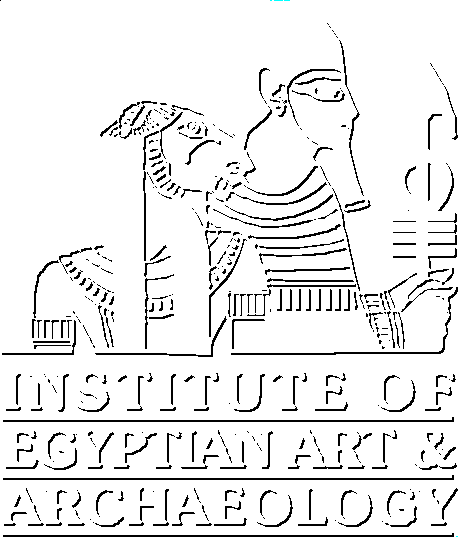Center for Egyptian Art and
Archaeology


|
Mission Statement
|
|
- To teach Egyptology courses at The University of Memphis.
- To research ancient Egypt.
- To educate the public about ancient Egypt.
- To exhibit Egyptian antiquities for the Memphis community.
|
Introduction
|
| Since 1985, the Center for Egyptian
Art and Archaeology has established a solid record
of accomplishment and an international reputation for its programs.
Scholars from Eu-
rope and Egypt have contributed to its research and educational
activities. Center staff
have also taken part in archaeological and epigraphic research in
Egypt and have contrib-
uted to books, symposia and conferences throughout the United
States and Europe. The
support of the Center of Excellence grant, combined with additional
grants and gifts from
the National Endowment for the Arts, the National Endowment for the
Humanities and
private and corporate sources, has led to a variety of successful
projects. |
Major Accomplishments
|
| Economic Impact
The center curated the Ramesses the Great Exhibition for the city
of Memphis in 1987.
Nearly 700,000 people visited the exhibition, which ran from April
through August, to
view 150 antiquities on loan from the Egyptian Museum in Cairo,
Egypt. The center
wrote the catalog that accompanied the exhibition to five other
cities and trained over
1,000 decent volunteers to lead tours. The city of Memphis has
calculated that the exhibi-
tion generated over $80 million in tourist revenues for Memphis and
Shelby County. In
conjunction with the opening of the exhibition, the center also
hosted a symposium
featuring 17 international scholars of Egyptology, an event which
established the center's
international reputation for outstanding performance.
Educational Impact
Since its inception, the center has been teaching undergraduate
courses in the art, history
and language of ancient Egypt. Because of the center, students at
The University of
Memphis can now earn a master's degree in art history with a
concentration in Egyptian
art and archaeology
The center's staff also wrote and published the first comprehensive
Teacher's Guide to
Ancient Egypt, which includes lesson plans and a slide set, for
students at the sixth grade
level. The guide has been so successful that the National Endowment
for the Arts, which
funded the development of the guide, has awarded a second grant to
the center to produce
a new edition in 1996. Requests for the existing guide have been
received from over 34
states and it has led to invitations to consult with the education
staffs of the Brooklyn
Museum in New York, the Louvre in Paris and the Egyptian Museum in
Cairo. |
|  |
COMMUNITY DONATION --
This black
grano-diorite head of the Egyptian god Amun, donated to the
institute by a consortium of Memphis businessmen, is displayed in
The Art Museum of The University ofMemphis. It symbolizes how the
support of the community complements support from the Center of
Excellence grant. |
| The center maintains the permanent
collection of Egyptian antiquities at The Art Museum
of The University of Memphis. Thanks to gifts and bequests, this
collection has grown
from 47 to over 400 Egyptian antiquities under the center's care.
Volunteer docents,
trained by the center, have led thousands of school children and
university students on
tours of the collection.
The center also maintains the Egyptian Library, a collection of
approximately 6,000 rare
and out-of-print volumes about ancient Egypt. The core of the
library is two gifts from
the collections of Professor W. Fairman and Professor Elizabeth
Thomas, two noted
Egyptologists. The library has made it possible for the three
scholars associated with the
center to produce numerous books and articles, as well as
conference papers, that en-
hance the center's international reputation.
The staff of the center themselves have established an
international reputation also,
receiving invitations to speak at major universities and museums in
England, Germany
and Egypt, as well as at major Egyptological centers throughout the
United States. |
Impact on the Archaeological
Field
|
| The center was associated with the
Egypt Exploration Society of London, England, in its
excavations at the site of ancient Memphis from 1984 to 1990.
Center scholars and
students worked alongside colleagues from Great Britain and
Australia to learn more
about this ancient capitol of Egypt.
In 1990, the center began its first independent project in Egypt at
the Great Hypostyle
Hall of Karnak. The staff of the Center for Egyptian Art and
Archaeology has sole re-
sponsibility for recording, translating and publishing the
inscriptions and reliefs on the
walls of the most famous room in Egypt's largest and most important
ancient temple.
This project, which will last until the year 2010, will allow
Egyptologists to study the
religious rituals depicted on the walls of the Hypostyle Hall and
to learn about the
building's history and use for a 2,000-year period of
antiquity. |
Conclusion
|
| The successful completion of the
center's first 10 years provides a solid base for future
endeavors. Future plans include an exhibition on its epigraphic
project at the Hypostyle
Hall of the Temple of Karnak, an international conference on
Egyptian tombs for the
benefit of Memphis and Shelby County teachers (sponsored by the
National Endowment
for the Arts), and the installation of the center's major new
bequest of antiquities, which it
acquired in 1995 in its exhibition at The Art Museum of The
University of Memphis.
|


|

